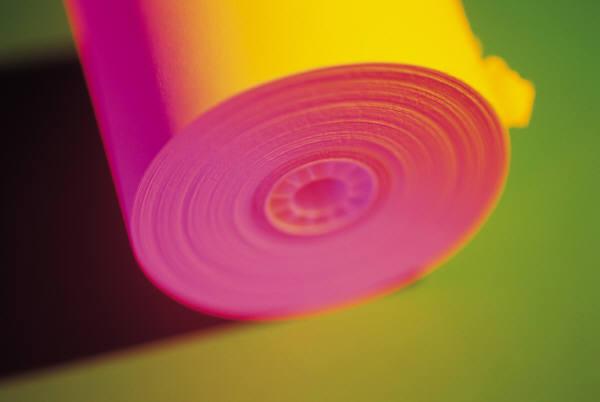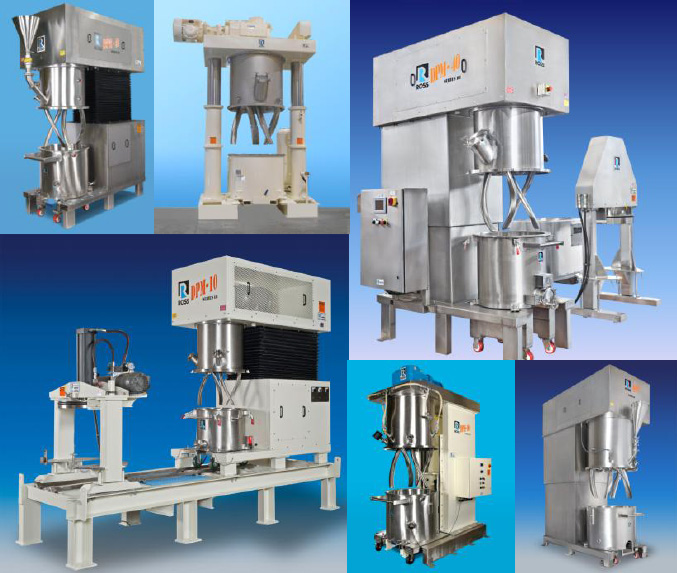Tech Report
Double Planetary Mixing of Pressure-Sensitive Adhesives

Application Summary
Formulated from rubber, acrylic or silicone polymers, pressure-sensitive adhesives are produced in several different ways depending on their chemistry, end-use and application. Mixer design and selection are based on multiple factors including viscosity, starting phase of the raw materials, order of addition, shear intensity, working temperature, ease of product transfer, desired throughput, pot-life and other formulation-specific requirements.
Double Planetary Mixers are commonly used for batch processing adhesive formulations that require melting and blending of fluids with very different viscosities. These systems are also ideal for carrying out reactions, removing entrapped air and mixing under sanitary conditions.
Ross Double Planetary Mixers
Many pressure-sensitive adhesive formulations are produced in Ross Double Planetary Mixers installed worldwide. These machines mix and knead viscous pastes and putty-like materials by rotating two identical blades on their own axes as they orbit on a common axis. The blades contact virtually every point of the batch and impart a very thorough mixing action even when the product is not free-flowing. Heavy-duty Ross Double Planetary Mixers equipped with High Viscosity "HV" Blades (US Patent No. 6,652,137) are particularly ideal for handling peak viscosities up to 6 million cP.
The order of addition and batching procedure in a Double Planetary Mixer both depend on the characteristics of the raw materials and the adhesive itself at each stage of the mixing cycle. The processing method therefore varies from one formulation to the next. A sample procedure begins with charging of copolymer powders into the mix can. The mixer is closed and as the agitators rotate, water is added into the batch. When all the powders are completely wetted-out, the result is a 5,000 cps paste-like material. The copolymer is then hydrolyzed by heating to 150°F. After approximately one hour of continuous mixing to maintain uniform composition and prevent localized heating, the hydrolysis reaction is complete. At this stage, the product is visibly more viscous and tacky. To finish the process, solvent is added to the hydrolyzed copolymer paste and the batch is mixed under vacuum. The final product, a clear honey-like pressure-sensitive adhesive, is discharged through the flush-mounted ball valve.

Some Advantages of Ross Double Planetary Mixerswith High Viscosity "HV" Blades
- Robust mixing power. The Ross Double Planetary Mixer can handle many ultra-high viscosity materials that previously required a double-arm kneader. It provides an alternative that is much less expensive and requires less maintenance. The helical curve and graduated down-thrust cross-section of the HV Blades prevent batch materials from "climbing" up into the mixer cover and charging ports. The smooth mixing action of the HV Blades also eliminates the torque spikes experienced in other planetary mixers equipped with conventional rectangular stirrers.
- Cleanability. There are no shaft seals, bearings, packing glands and stuffing boxes submerged in the product zone of the Double Planetary Mixer. Agitators are raised and lowered by a hydraulic lift allowing easy access for cleaning between batches.
- Change can design. This feature further reduces the risk for cross-contamination between batches while allowing for semi-continuous operation when one mixer is used with multiple vessels.
- Fast and easy discharge of highly viscous products. A Discharge System supplied with the mixer simplifies and accelerates the transfer of a non-flowable product after the mixing cycle. With the mix can positioned beneath the Discharge System, a platen is lowered hydraulically into the vessel. A specially-fitted O-ring rides against the vessel, virtually wiping the sidewall surfaces clean. Product is forced out through a valve on the bottom of the vessel, or through the top of the platen.